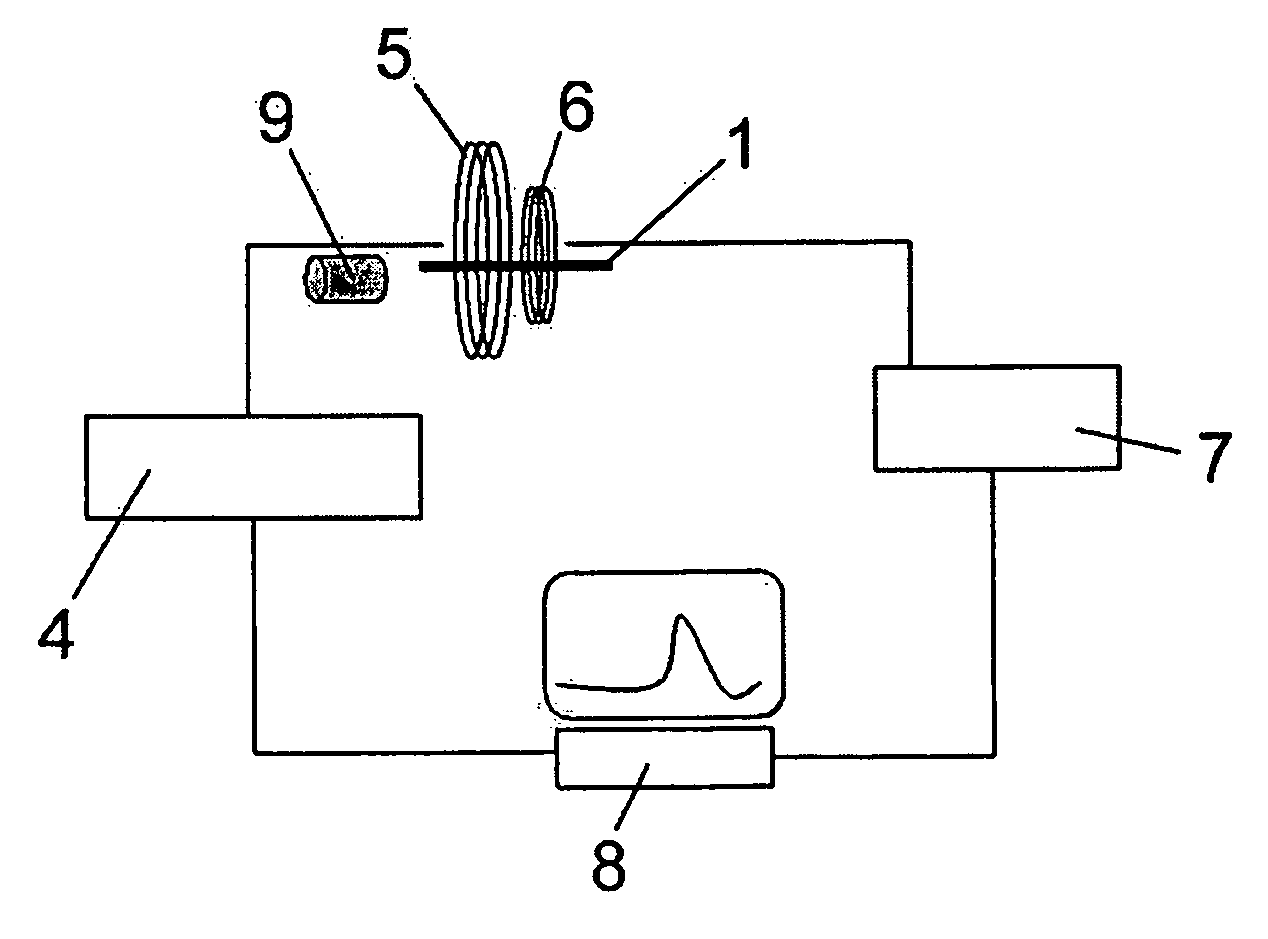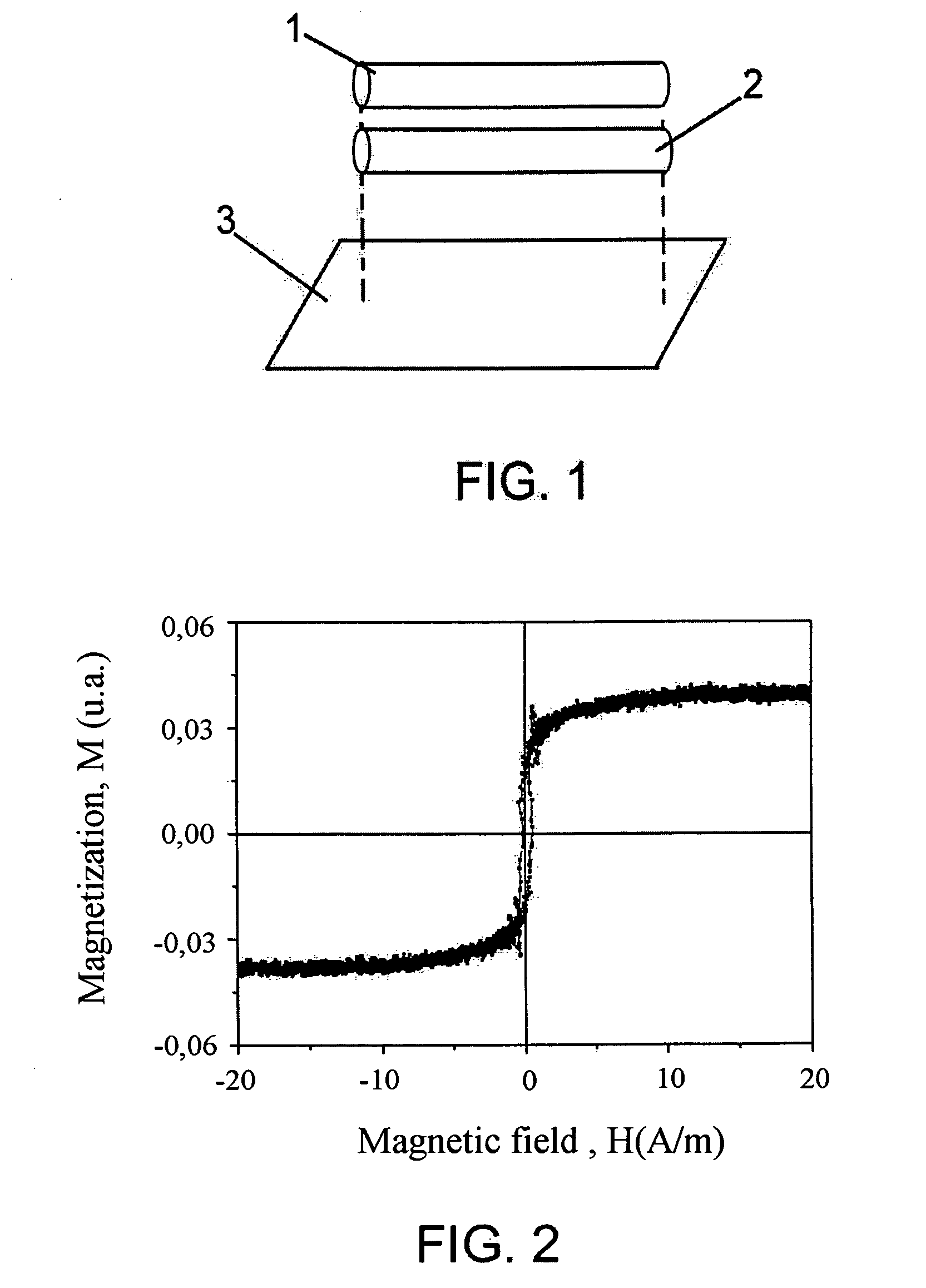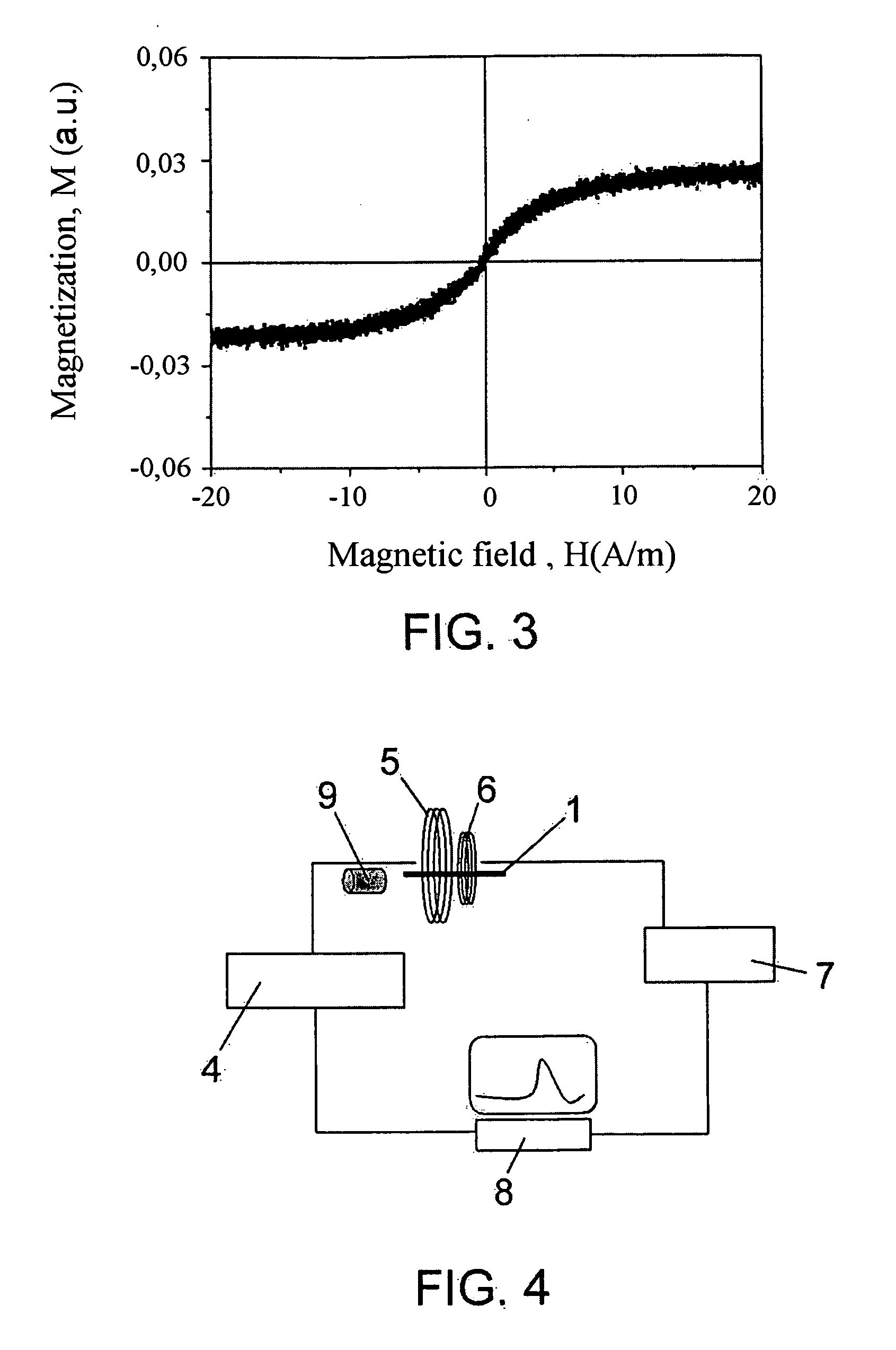Magnetoacoustic markers based on magnetic microwire, and method of obtaining the same
a magnetic microwire and magnetic technology, applied in the field of magnetic microwire magnetic microwire and magnetic microwire acquisition method, can solve the problem of difficulty in distinguishing the signal of the marker from other pseudo-signals generated by any other type of metal, and the substantial length of the marker observed
- Summary
- Abstract
- Description
- Claims
- Application Information
AI Technical Summary
Problems solved by technology
Method used
Image
Examples
Embodiment Construction
[0024]The present invention proposes the production of a magnetomechanical marker based on magnetic microwires. This new design allows markers to be obtained of sizes smaller than those fabricated from magnetic ribbons. The marker object of the invention consists of two elements: magnetoelastic amorphous microwire and hard magnetic microwire.
[0025]In accordance with a first aspect of the present invention, this relates to an activatable / deactivatable magnetic marker formed by at least two components based on magnetic microwire, where:[0026]the first component comprises a non-bistable magnetoelastic soft magnetic microwire with induced transversal magnetic anisotropy characterized in that it has a magnetoelastic resonance frequency of tens of kHz, preferably 58 kHz.[0027]the second component is a hard magnetic microwire that allows the first component to be magnetized in the activation state of the marker.
[0028]Said soft magnetic microwire has to have a magnetoelastic composition of ...
PUM
 Login to View More
Login to View More Abstract
Description
Claims
Application Information
 Login to View More
Login to View More - R&D
- Intellectual Property
- Life Sciences
- Materials
- Tech Scout
- Unparalleled Data Quality
- Higher Quality Content
- 60% Fewer Hallucinations
Browse by: Latest US Patents, China's latest patents, Technical Efficacy Thesaurus, Application Domain, Technology Topic, Popular Technical Reports.
© 2025 PatSnap. All rights reserved.Legal|Privacy policy|Modern Slavery Act Transparency Statement|Sitemap|About US| Contact US: help@patsnap.com



